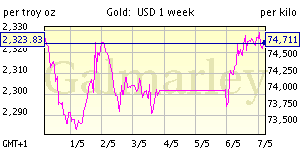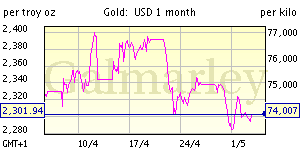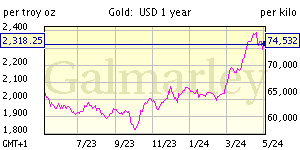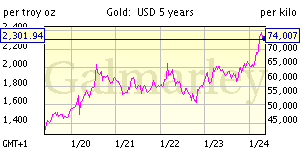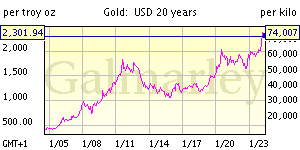The Chinese have a problem. Their economy is dependent upon exports to the US. Those exports are paid for with dollars. The mass amounts of dollars that are held by the Chinese are known as "reserves." With the US printing more and more dollars out of thin air, this has the effect of making those reserves worth less and less.
Reserves can be held in dollars, euros, gold etc. But, when the time comes to spend those reserves, they will have to be converted BACK to whatever currency it is they want to spend.
And therein lies the problem.
China holds HUGE amounts of dollars. If they try to swap these dollars for something else, the rest of the world will catch wind of it, and the dollar will tank. That is the last thing the Chinese want, as a falling dollar erodes the value of their dollar reserves as well.
On the other end of the exchange lies the same problem. If the Chinese begin selling dollars and buying gold, not only will the dollar fall, but gold will rise, making them pay more and more for the gold.
So what is the solution?
The following article from Elliott Wave International entitled, US Dollar,Yuan and the New Reserve Currency lays out their strategy.
There has been a lot of talk lately about replacing the U.S. dollar as the world's reserve currency. Read these thoughts on this and another hot subject -- China's dependence on the dollar -- by Chris Carolan, the editor of Elliott Wave International's Sunday-Tuesday-Thursday Asian-Pacific Short Term Update. (Excerpted from the recent APSTU issues.)
...the Chinese have announced that they would like the world to establish a reserve currency alternative to the dollar, perhaps under the auspices of the IMF. The U.S. has responded (through Paul Volcker) that the Chinese have created their own predicament by not allowing the yuan to float higher. But we believe that the larger trends to watch are the inevitable leadership role that the Asian-Pacific markets will play in the next bull market as they have access to cheaper capital than the debt-stressed West.
We think that people who focus on the alleged Chinese problem of holding too many dollars miss the point. In the long run, they can reduce their new dollar positions, while the U.S. government is, through their recent actions especially, committing themselves to issuing greater and greater amounts of dollar debt. The Chinese can (and may) push themselves away from the table, but the U.S. does not have the luxury of that freedom.
The yuan, whose exchange rate is controlled, seems to be pushing higher within the boundaries of its restricted trading. [This] chart shows the dollar falling relative to the yuan.
Chart
How will the Chinese cut their exposure to the dollar over time? News accounts tend to focus on one big event, such as the possibility of a new reserve currency to replace the dollar. But in all likelihood, the Chinese will be making a series of moves, each one gaining them a little bit of insulation from the dollar. If they can protect one hundred billion (US$) here and another one hundred billion there, pretty soon they will have cut their dollar exposure significantly.
We highlighted one such action in our recent discussion of China’s move into owning more resources as a way of diversifying out of the dollar. Now comes news of China executing more currency swaps, where they trade yuan for a local currency, thereby allowing that trading partner to use the yuan in future trade with China. These swaps then remove the need for dollars as an intermediary exchange between trading partners. The Chinese have signed six such swap agreements since November totaling $95 billion. The latest swap agreement is with Argentina.
Step by incremental step, the Chinese are solving their dollar problem, or at least ameliorating it. Those looking for that one big news event to signal the dollar’s irrelevance may be missing the trend, though such an event may still occur further out in time.
![[Most Recent Quotes from www.kitco.com]](http://www.kitconet.com/images/quotes_7a.gif)

